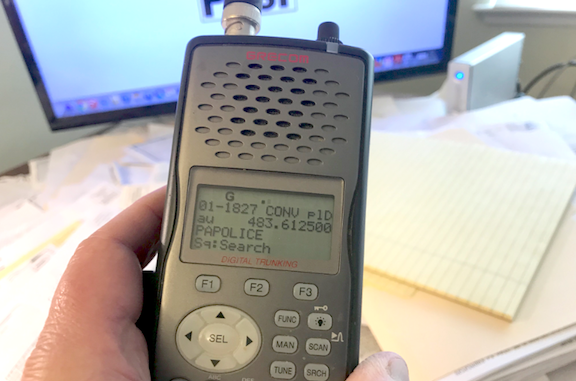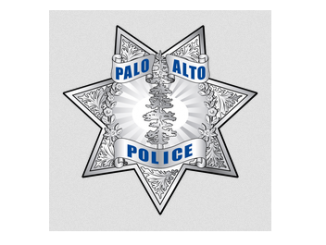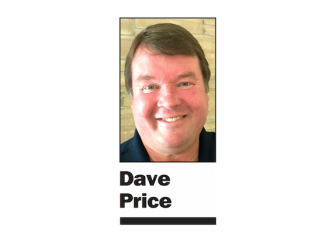
The following story appeared in the June 16, 2017, edition of the Daily Post. We’re posting the story today because it provides some background for tonight’s Palo Alto City Council discussion about the Police Department’s decision to encrypt police radios. Palo Alto switched to the digital system in June 2019 but didn’t go to encryption until January of this year.
BY JEN NOWELL
Daily Post Staff Writer
Palo Alto’s police, fire and utilities departments may soon switch to a new radio communications system, allowing agencies across the county to communicate with one another on the same frequencies, but the reliability of the system could be spotty.
City Council on Monday (June 19, 2017) will vote on whether to approve the $917,000 purchase of new dispatch radio consoles from Motorola. This is one step in a $4 million project.
Charlie Cullen, technical services director for the police department, said yesterday that every police and fire agency in the county will eventually switch to the new system. Sunnyvale and Santa Clara went live on the new system last year, he said.
But in Palo Alto, there are concerns about reliability, especially in the foothills, Cullen said. The city will be testing the equipment “extensively” before it goes live with the system, he said. The city will focus on areas such as Page Mill Road, Foothills Park and up near Skyline Boulevard, Cullen said. If someone is injured, communication will be important.
There has even been talk about adding a radio antenna site in the area of the foothills to enhance the signal, Cullen said.
Redwood City fiasco
In 2004, Redwood City made the move over to the new system, but after four years of problems, the city bailed out and returned to its old system, according to ABC 7 News.
Officers who spoke with ABC 7 said they had serious concerns about the reliability of the system, and they felt their safety was being jeopardized.
Peter Ingram, then Redwood City’s city manager, told ABC 7 in 2008 that “issues include an unacceptable level of audio distortion, the inability for officers to interrupt ongoing radio traffic with more urgent radio traffic and a lag time from depressing the mic button to when a user can begin transmitting.”
The push to switch to the higher frequency came after the Sept. 11, 2001 attack, Cullen said. The towers came down, and police got the message to leave but firefighters didn’t, he said. With every agency on the higher frequency, police, fire and even public works will all be able to communicate with one another. Currently, Palo Alto’s police and fire departments are on two separate frequencies, with police in the 400 MHz range and fire near 150-160 MHz, Cullen said. The switch will put police, fire and utilities on new frequencies in the 700 MHz portion of the band.
This will help in emergencies, such as an earthquake, he said. Cullen added that this change would have been helpful during the large anarchist protest in downtown Palo Alto in 2005.
Encryption under consideration
Officers from other cities were brought in to help with the crowds, but with every agency on a different frequency, Palo Alto had to rent and hand out radios, Cullen said, costing the city more money.
Radio enthusiasts who monitor police calls may notice the change, as well. Listeners will most likely need to buy a scanner capable of receiving signals in the 700 MHz range, Cullen said.
The department hasn’t yet made a decision on whether it will encrypt the channels to prevent people from listening in, but Cullen said most likely the “primary talk groups” will not be encrypted.
In 2012, the Pasadena Police Department switched from analog to digital, preventing the public from listening in on police calls.
Council initially approved the city’s participation in the countywide switch on June 22, 2015.



